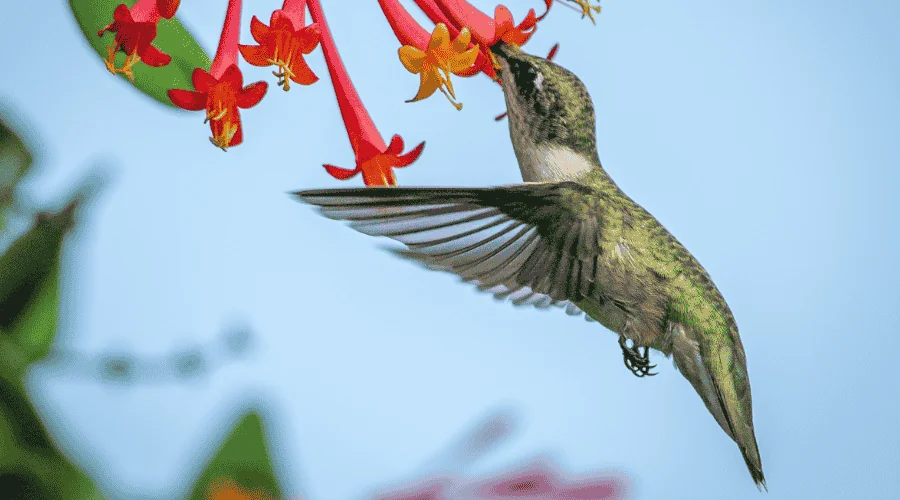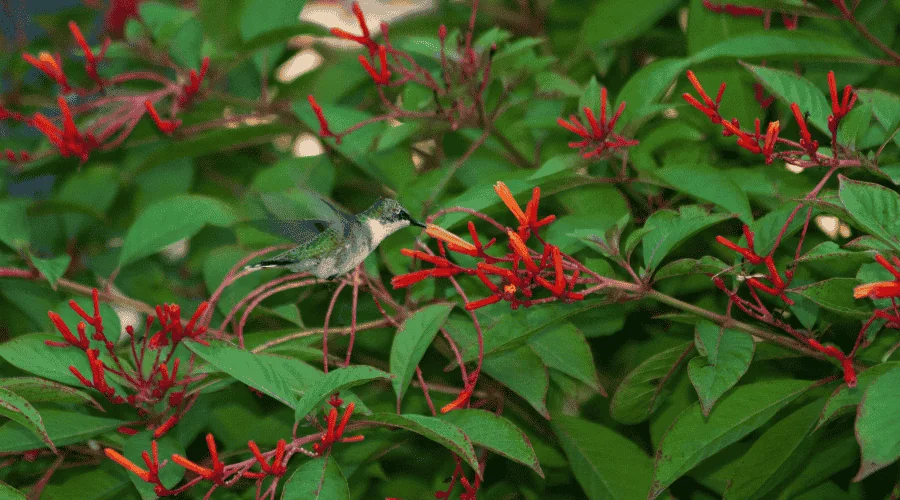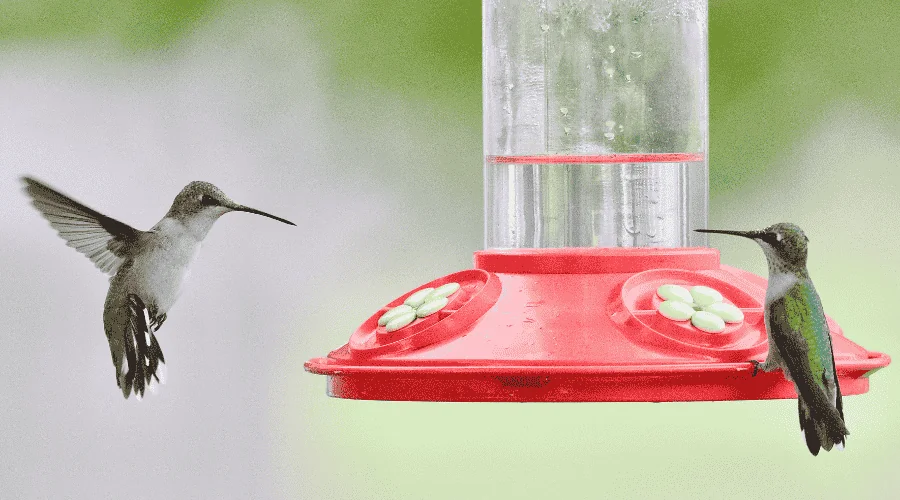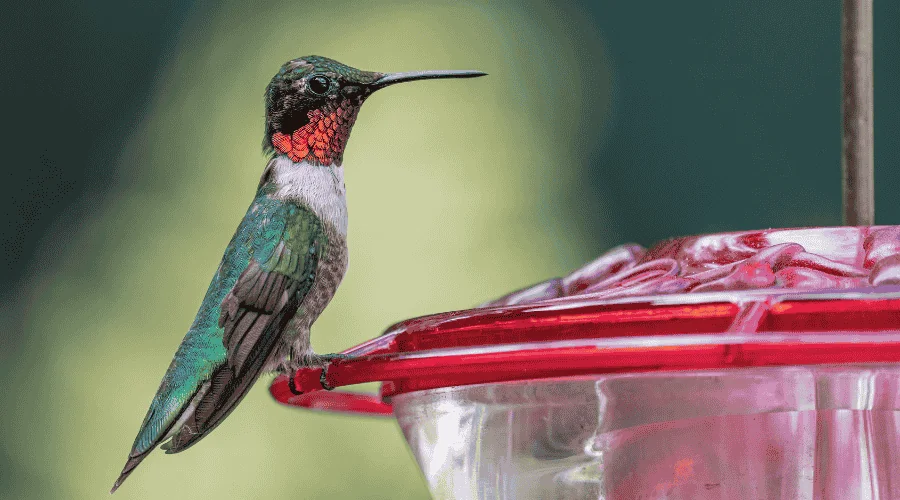By Amanda Rose Newton
If you’ve ever spotted a flash of iridescent green zipping through your backyard, you know the thrill of seeing a hummingbird up close. These tiny, energetic pollinators are a delight to watch—and even better, you can invite them into your garden by growing the right nectar-rich flowers. In Central Florida’s warm, subtropical climate, it’s easy to turn your yard into a haven for these winged wonders nearly year-round. Here’s how to become a Garden Habitat Hero and create a hummingbird-friendly space with plants that thrive in our region.

Why Hummingbirds Need Our Help
Hummingbirds rely on nectar for energy, especially during migration. As habitat loss and urban development reduce natural feeding grounds, your garden can provide a vital stopover or permanent home. By offering both nectar-rich flowers and safe habitat, you’re helping sustain these important pollinators—and enjoying their aerial acrobatics in the process!

Native and Florida-Friendly Nectar Plants for Hummingbirds
Below are top picks that thrive in Central Florida’s climate, offering not only beauty but sustainability. Many are drought-tolerant, low-maintenance, and safe for local ecosystems.
–Firebush (Hamelia patens) – Native
Why Hummingbirds Love It: Tubular red-orange blooms are rich in nectar.
Tips: Full sun, drought-tolerant, blooms nearly year-round in frost-free areas.
–Salvia (Salvia spp.) – Florida-Friendly/Natives Available
Why Hummingbirds Love It: Long-blooming spikes in red, purple, or coral.
Tips: Look for native Salvia coccinea or Florida-adapted cultivars like ‘Coral Nymph.’ Full sun, well-drained soil.
–Coral Honeysuckle (Lonicera sempervirens) – Native
Why Hummingbirds Love It: Red, tubular flowers are perfectly suited for their beaks.
Tips: Great for trellises and mailboxes. Not invasive like Japanese honeysuckle. Part to full sun.
–Scarlet Sage (Salvia coccinea) – Native
Why Hummingbirds Love It: Bright red blooms with easy nectar access.
Tips: Self-seeds, grows in full sun or light shade, and tolerates sandy soil.
–Tropical Sage (Salvia coccinea ‘Lady in Red’) – Native cultivar
Why Hummingbirds Love It: The bright red, tubular flowers are perfectly shaped for a hummingbird’s long beak and provide an excellent source of nectar.
Tips: Compact size, easy to grow in containers or beds.
–Wild Columbine (Aquilegia canadensis) – Native
Why Hummingbirds Love It: Elegant red and yellow flowers offer early-season nectar.
Tips: Best in part shade. Short-lived but reseeds.
–Standing Cypress (Ipomopsis rubra) – Native
Why Hummingbirds Love It: Tall spikes of fiery red flowers.
Tips: Biennial, grows well in sandy, disturbed soils. Great for wildflower gardens.
–Beach Morning Glory (Ipomoea imperati) – Native
Why Hummingbirds Love It: Funnel-shaped flowers on a vining ground cover.
Tips: Good for coastal gardens, full sun, drought-tolerant.
–Red Star Hibiscus (Hibiscus coccineus) – Native
Why Hummingbirds Love It: Large, showy red blooms.
Tips: Prefers moist soils. Great for rain gardens or pond edges.

Tips for Creating a Hummingbird Habitat
- Plant in Groups: Clusters of the same flower help hummingbirds feed more efficiently.
- Use a Variety of Heights: Include vines, shrubs, and flowering perennials.
- Provide Perching and Nesting Areas: Small trees or native shrubs, such as Simpson’s Stopper or Wax Myrtle, offer shelter.
- Avoid Pesticides: Hummingbirds also eat small insects for protein. Pesticides harm them and their food supply.
- Keep Flowers Blooming: Use a mix of plants to keep nectar available from early spring through fall—and even into winter.

About Hummingbird Feeders
Feeders are a great supplement to natural nectar, especially during migration or in seasons with fewer blooms.
Tips for Success:
- Choose a red feeder—hummingbirds are highly attracted to the color red.
- Skip the red dye. It’s unnecessary and may be harmful to birds. The red on the feeder itself is enough.
- Fill with a homemade nectar solution:
- 4 parts water to 1 part white granulated sugar.
- Boil, then cool and store in the refrigerator for up to a week.
Maintenance Matters:
- Clean feeders every 2–3 days in summer (daily if it’s especially hot).
- Use vinegar and hot water to clean—avoid soap residues.

Creating a hummingbird haven doesn’t require a huge space—just thoughtful planting and care. Whether you tuck a few tropical sages into a patio container or landscape your yard with native favorites like coral honeysuckle and firebush, every flower helps. By skipping red dyes, using sustainable plants, and offering safe feeding stations, you’re not just making a garden—you’re making a difference.
So go ahead—plant boldly, skip the chemicals, and welcome the buzz of hummingbird wings into your garden sanctuary. You’ll be a Garden Habitat Hero in no time.


